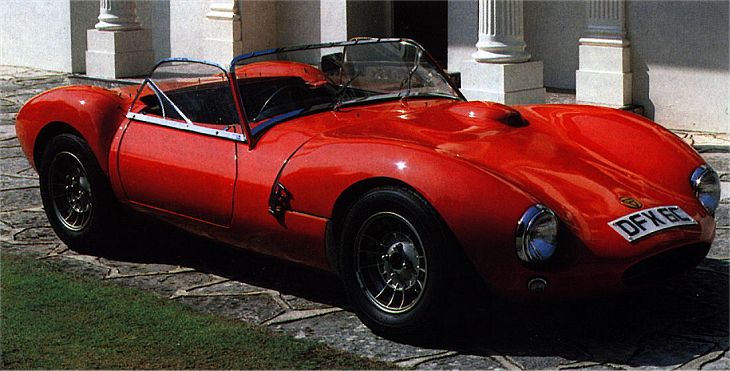Description
The Ginetta G5 was a small but influential sports car produced in the mid-1960s by Ginetta Cars, the specialist British manufacturer founded by the Walklett brothers. Introduced in 1965, the G5 built upon the company’s earlier lightweight designs, particularly the G4, but was developed with the intention of competing at a higher level of motorsport. Where the G4 had established Ginetta’s reputation as a builder of fast and agile kit cars, the G5 aimed to take the company closer to the world of professional racing.
The design of the G5 was sharper and more aggressive than that of its predecessor. It retained the compact, low-slung stance of earlier Ginettas but featured a longer wheelbase, wider track, and revised aerodynamics. The bodywork was crafted from fiberglass, keeping the car lightweight while allowing for sleek curves and functional details. Its proportions emphasized performance, with a long bonnet, flared arches, and a purposeful stance that made it look ready for the track.
Inside, the G5 was stripped down to essentials, reflecting its competition focus. A pair of bucket seats, a small-diameter steering wheel, and a simple dashboard with the necessary gauges completed the cabin. Comfort was not a priority—the focus was on providing the driver with the lightness and feedback needed for racing.
Mechanically, the Ginetta G5 was engineered for serious performance. It was designed around Ford’s Lotus Twin Cam engine, the same powerplant used in the Lotus Elan and Lotus Cortina, producing between 100 and 160 horsepower depending on tune. Paired with a lightweight chassis and weighing well under 600 kg, the G5 delivered astonishing performance figures for its size. Power was transmitted to the rear wheels through a Ford-sourced gearbox, while independent suspension and disc brakes gave it precise handling and stopping ability.
On the track, the G5 proved highly competitive, particularly in GT racing and hill climbs. Its blend of light weight, powerful engine options, and nimble handling made it a formidable rival to more established marques. Privateer racers in the UK and Europe found the car to be an affordable but highly effective entry into motorsport, further cementing Ginetta’s reputation as a maker of giant-killing sports cars.
Production numbers were small, as with most Ginettas of the era. Only a handful of G5s were built, with many going directly into the hands of racers rather than private road car buyers. The car’s rarity has only increased its appeal over time, as surviving examples represent an important link in Ginetta’s history.
Today, the Ginetta G5 is remembered as one of the company’s most significant early models, a car that helped transition Ginetta from producing enthusiast-focused kit cars to building serious race machinery. It also set the stage for later models, such as the G12, which would carry Ginetta even further into international competition. As a classic, the G5 is highly prized among collectors and enthusiasts for its rarity, its motorsport pedigree, and its role in the story of one of Britain’s most enduring independent carmakers.
